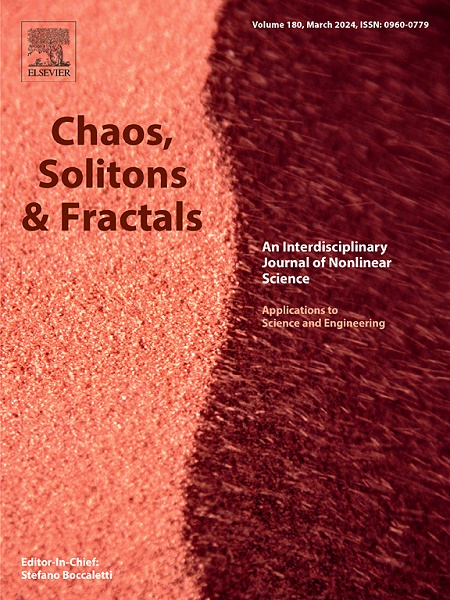Synergistic effects of feedback regulation and vegetation internal competition on vegetation patterns in semi-arid environments
IF 5.6
1区 数学
Q1 MATHEMATICS, INTERDISCIPLINARY APPLICATIONS
引用次数: 0
Abstract
Against the backdrop of global aridification, the spatial self-organization of vegetation in semi-arid regions is critical to ecosystem stability. This study employs mathematical modeling to unravel the synergistic effects of soil–water diffusion feedback () and vegetation internal competition () on pattern formation. Extending the Klausmeier framework, we integrate a cross-diffusion term for root-driven soil–water feedback and a density-dependent competition term . Key findings include: (1) Increasing drives sequential transitions from homogeneous states to gap, stripe, and spot patterns, while rising induces reverse transitions, revealing their antagonistic roles in stability; (2) Enhanced precipitation promotes the expansion of discrete spots into continuous stripes, eventually forming gaps under water surplus. Root-mediated water uptake balances short-term facilitation and long-term competition, explaining adaptive responses to resource constraints. Spot patterns act as desertification warnings, whereas stripes offer restoration strategies via high water-use efficiency. By merging cross-diffusion and competition mechanisms, this work proposes a theoretical framework for arid land management, linking mechanistic insights to practical solutions against land degradation.
半干旱环境下反馈调节与植被内部竞争对植被格局的协同效应
在全球干旱化的大背景下,半干旱区植被的空间自组织对生态系统的稳定至关重要。利用数学模型分析了土壤-水扩散反馈(β)和植被内部竞争(σ)对格局形成的协同效应。扩展Klausmeier框架,我们整合了根驱动的土壤-水反馈的交叉扩散项Δ(w−βn)和密度相关的竞争项1+σn2。主要发现包括:(1)β值的增加促进了均匀态向间隙态、条纹态和斑点态的顺序转变,而σ值的增加则导致了反向转变,揭示了它们在稳定性中的拮抗作用;(2)降水增强促使离散斑点扩展为连续条纹,最终在剩余水量下形成缝隙。根介导的水分吸收平衡了短期促进和长期竞争,解释了对资源限制的适应性反应。斑点图案作为荒漠化预警,而条纹则通过高用水效率提供恢复策略。通过融合交叉扩散和竞争机制,本研究提出了干旱土地管理的理论框架,将机制见解与防止土地退化的实际解决方案联系起来。
本文章由计算机程序翻译,如有差异,请以英文原文为准。
求助全文
约1分钟内获得全文
求助全文
来源期刊

Chaos Solitons & Fractals
物理-数学跨学科应用
CiteScore
13.20
自引率
10.30%
发文量
1087
审稿时长
9 months
期刊介绍:
Chaos, Solitons & Fractals strives to establish itself as a premier journal in the interdisciplinary realm of Nonlinear Science, Non-equilibrium, and Complex Phenomena. It welcomes submissions covering a broad spectrum of topics within this field, including dynamics, non-equilibrium processes in physics, chemistry, and geophysics, complex matter and networks, mathematical models, computational biology, applications to quantum and mesoscopic phenomena, fluctuations and random processes, self-organization, and social phenomena.
 求助内容:
求助内容: 应助结果提醒方式:
应助结果提醒方式:


